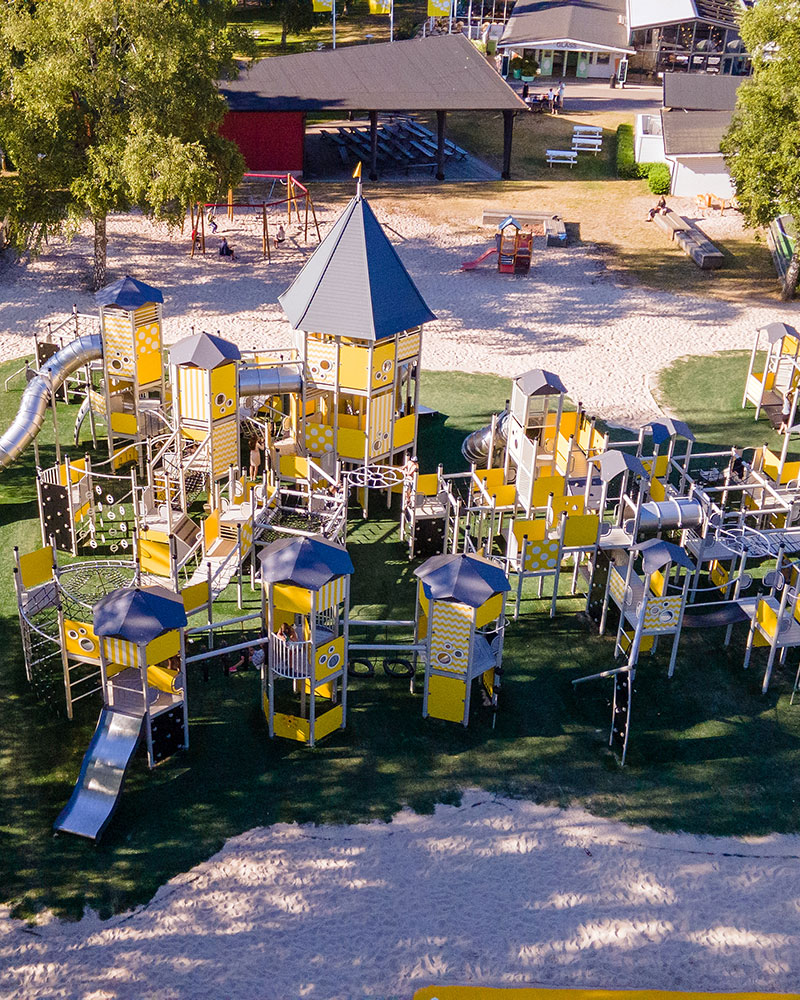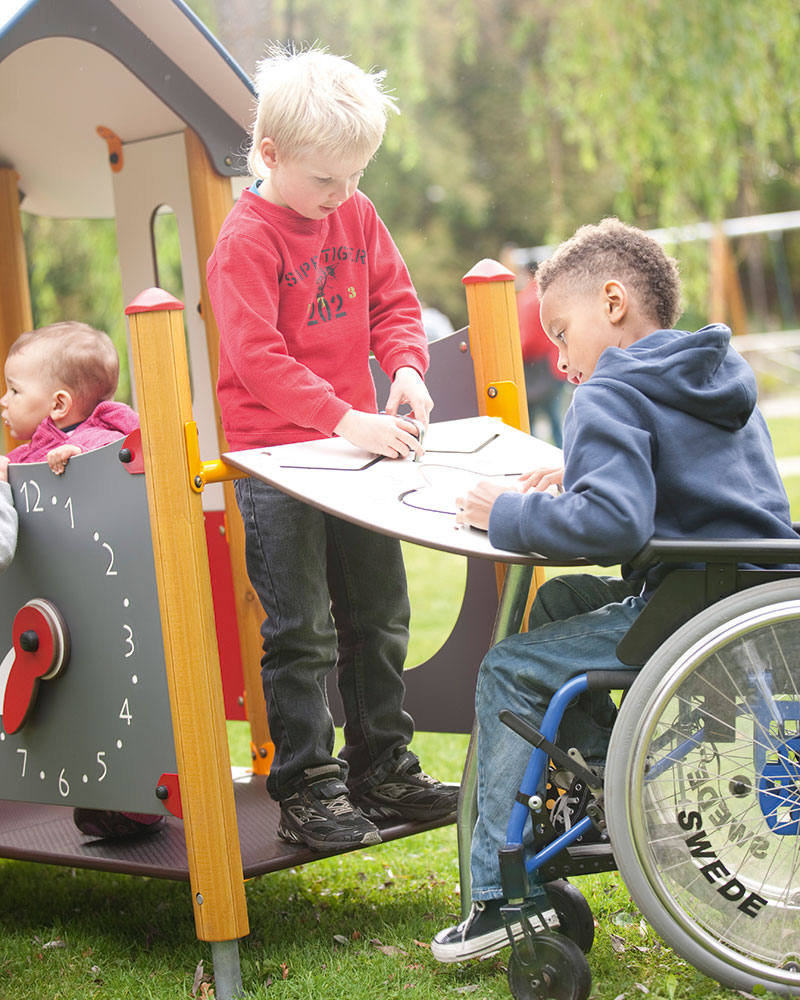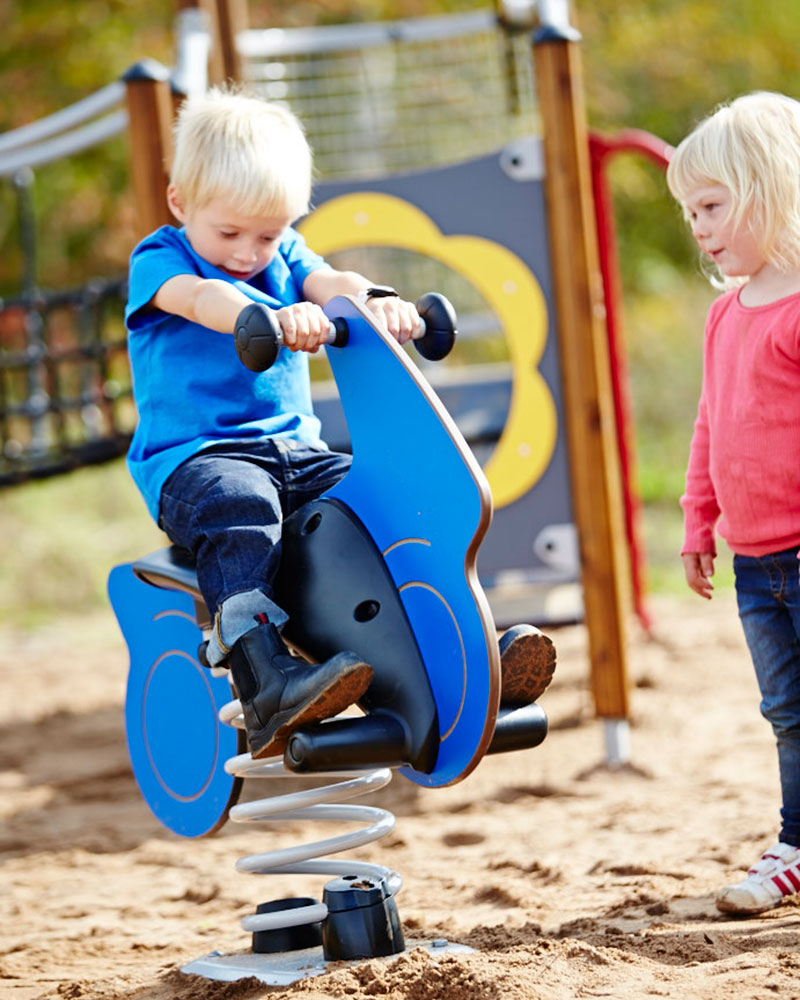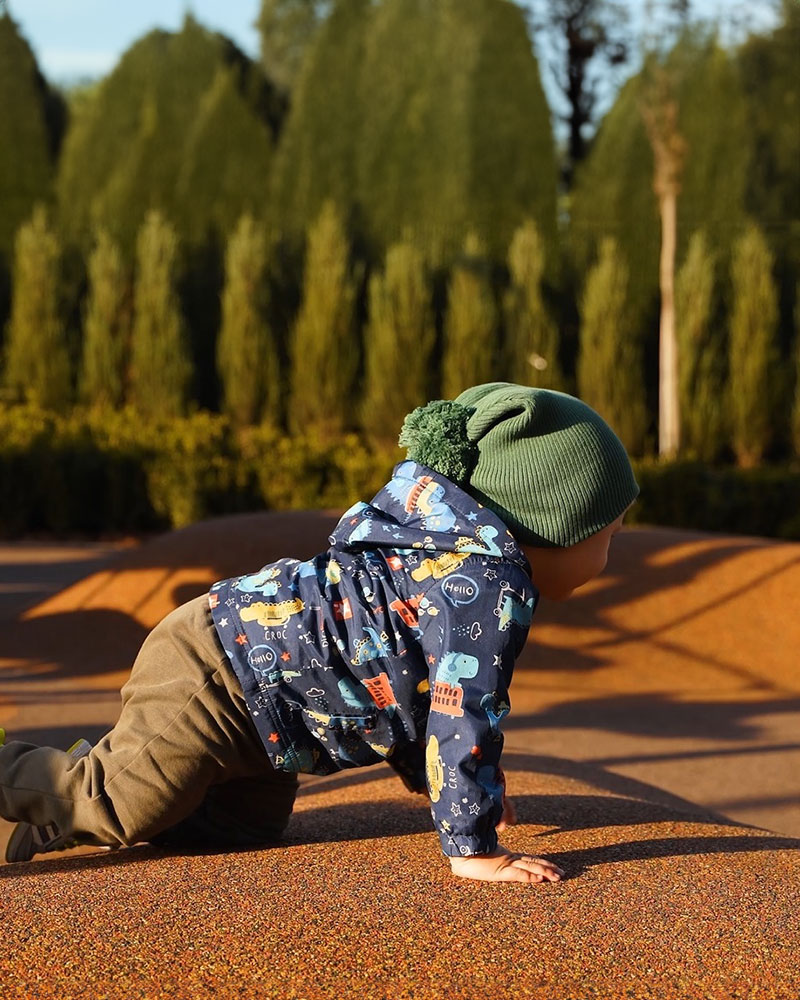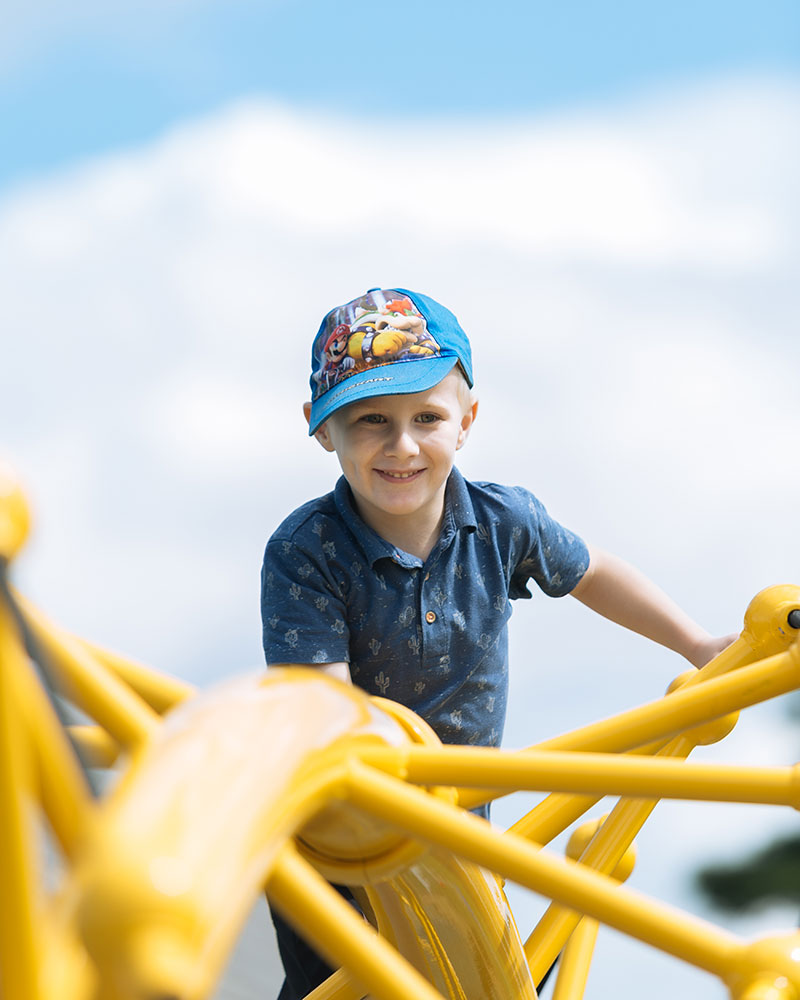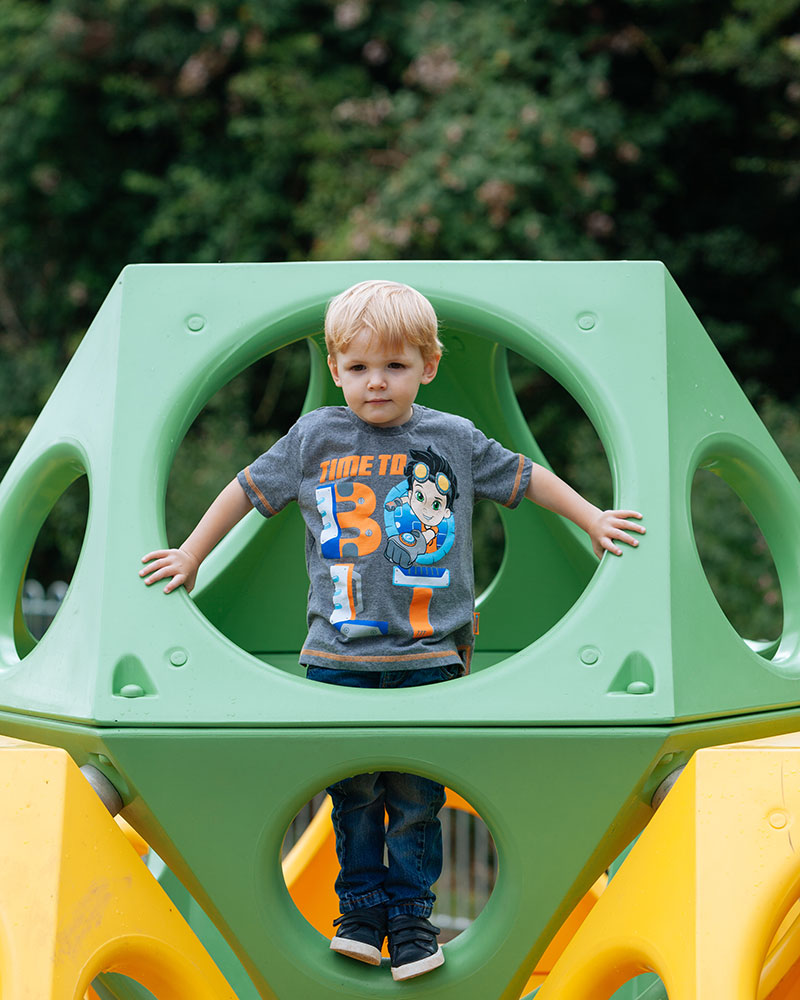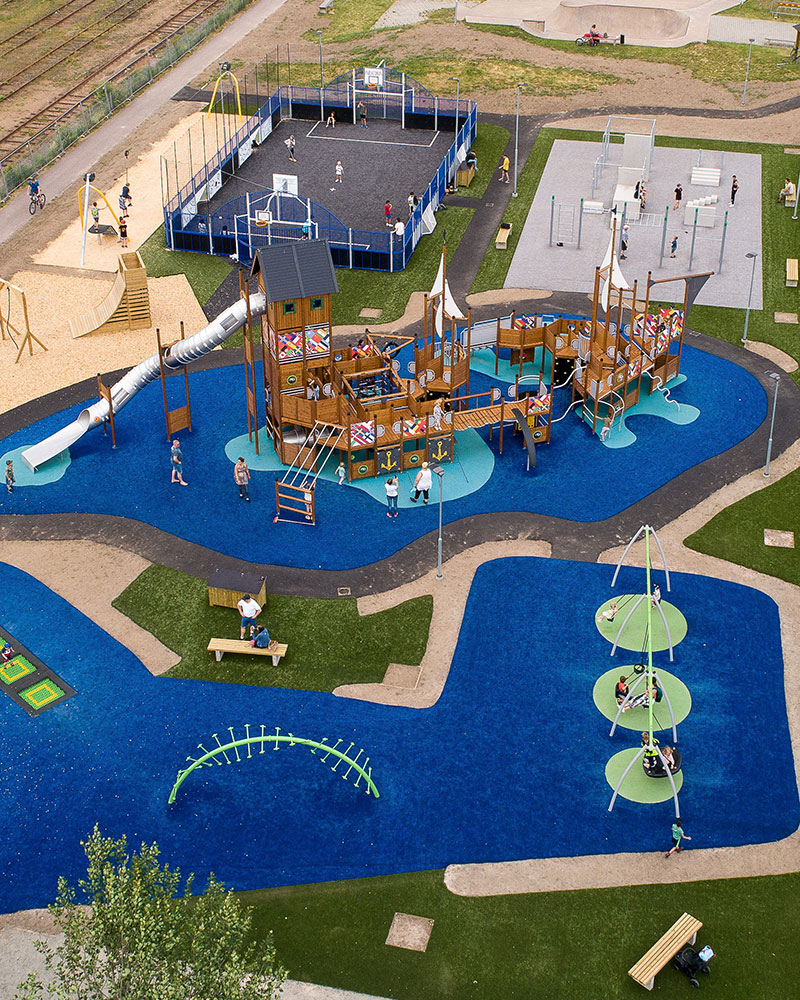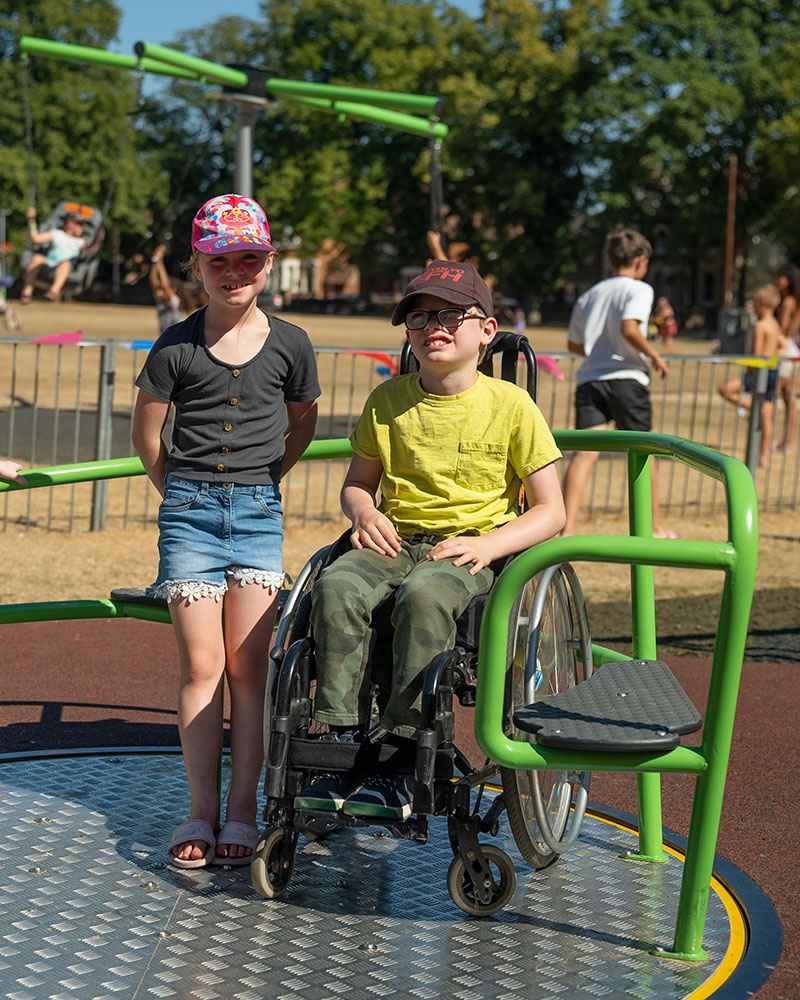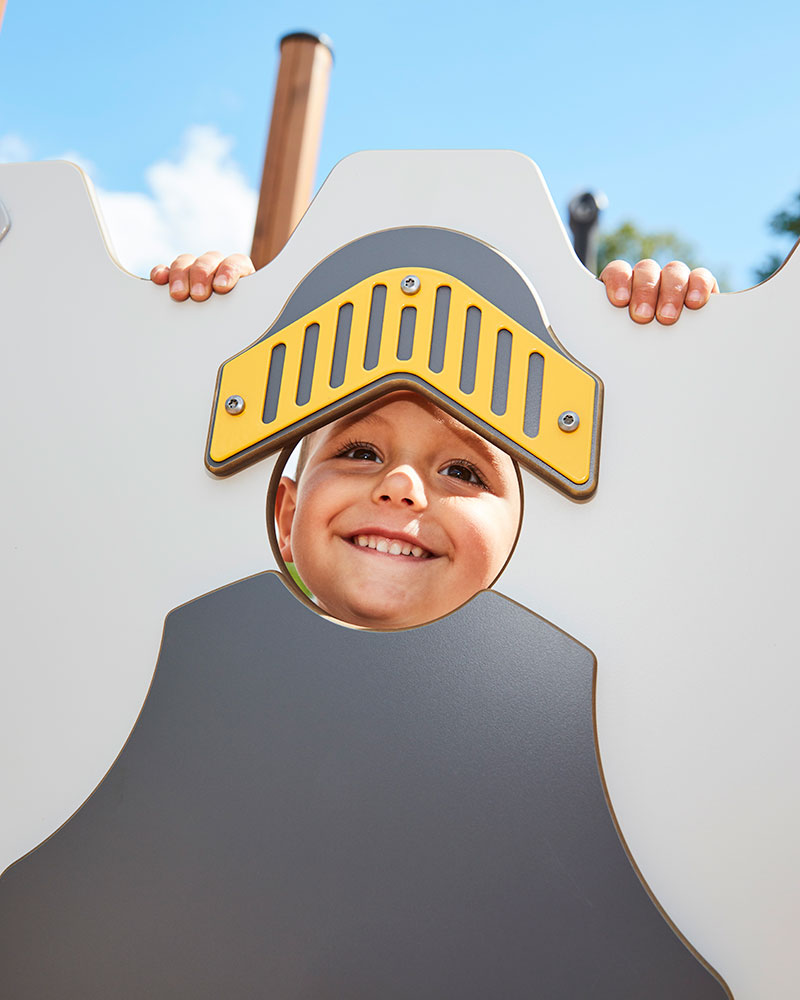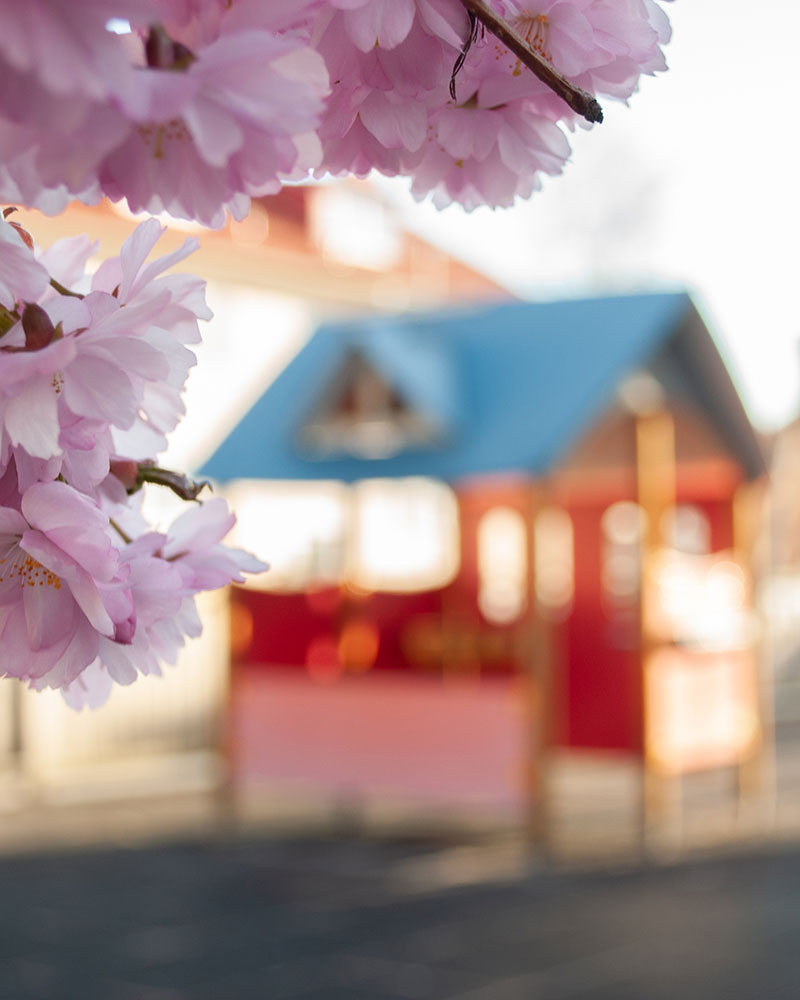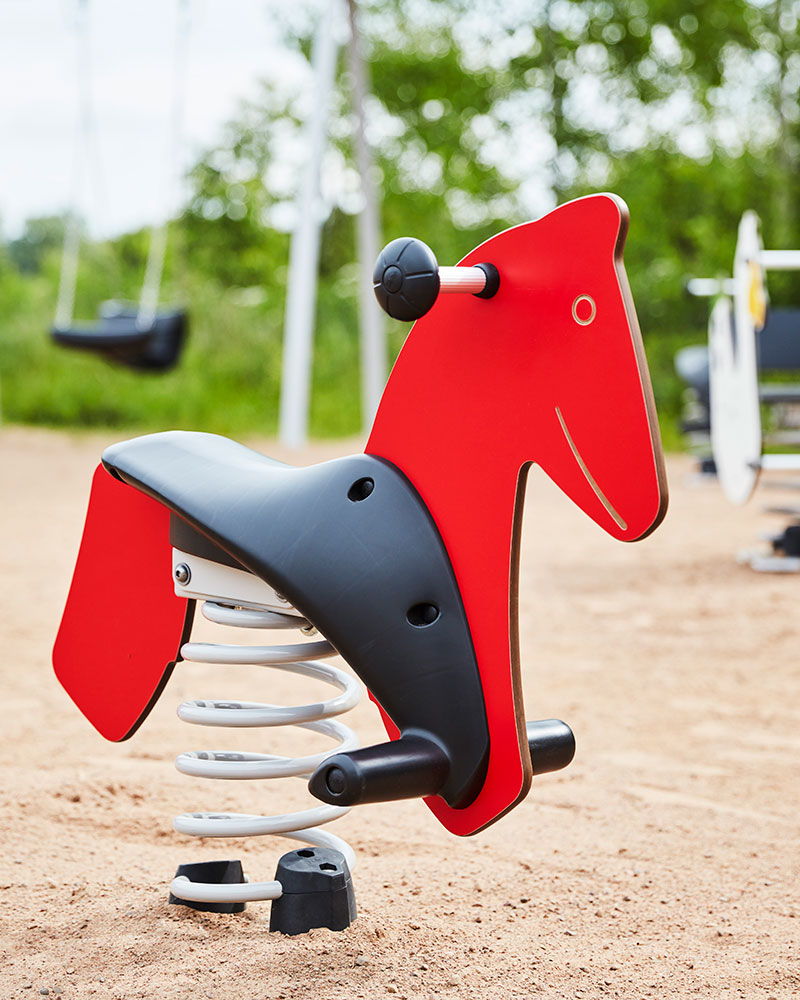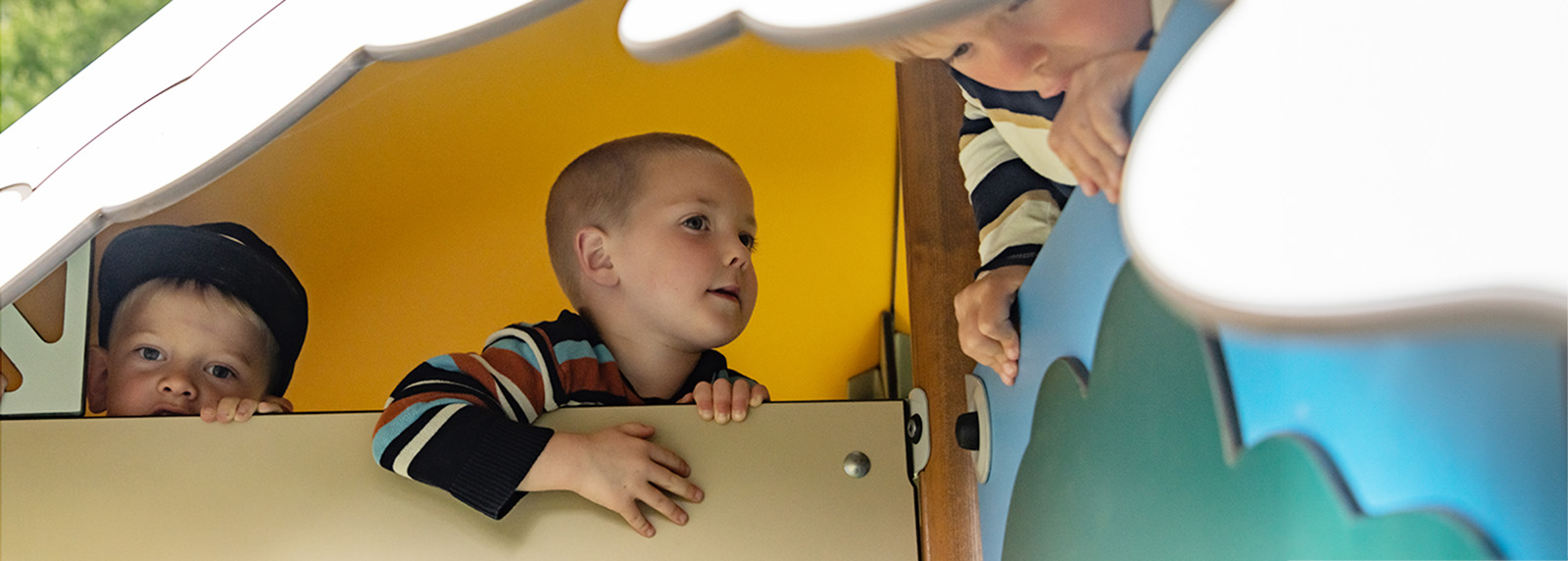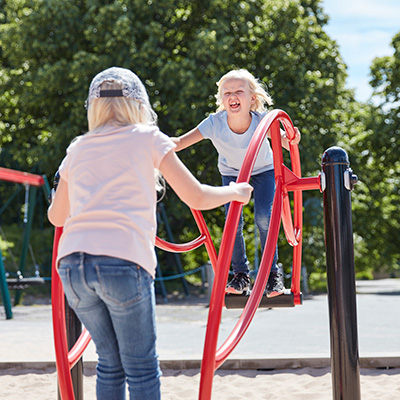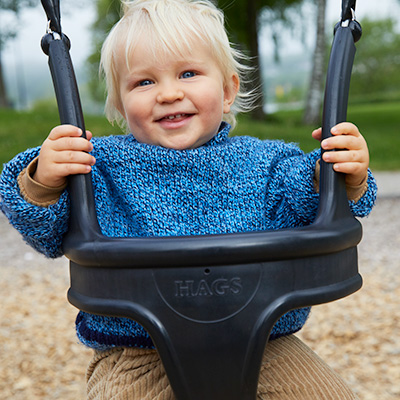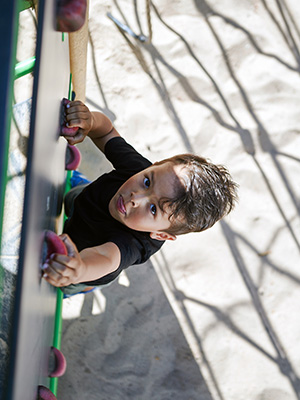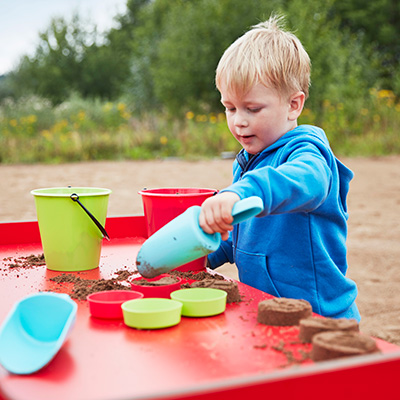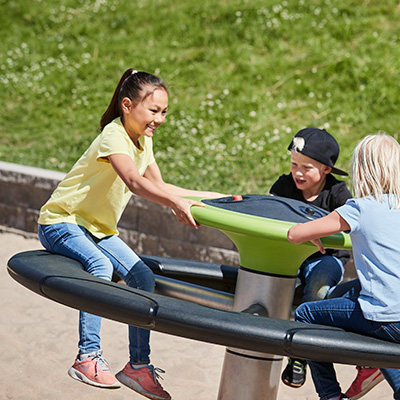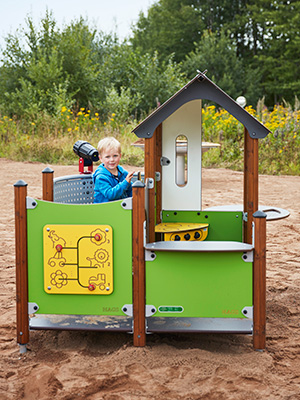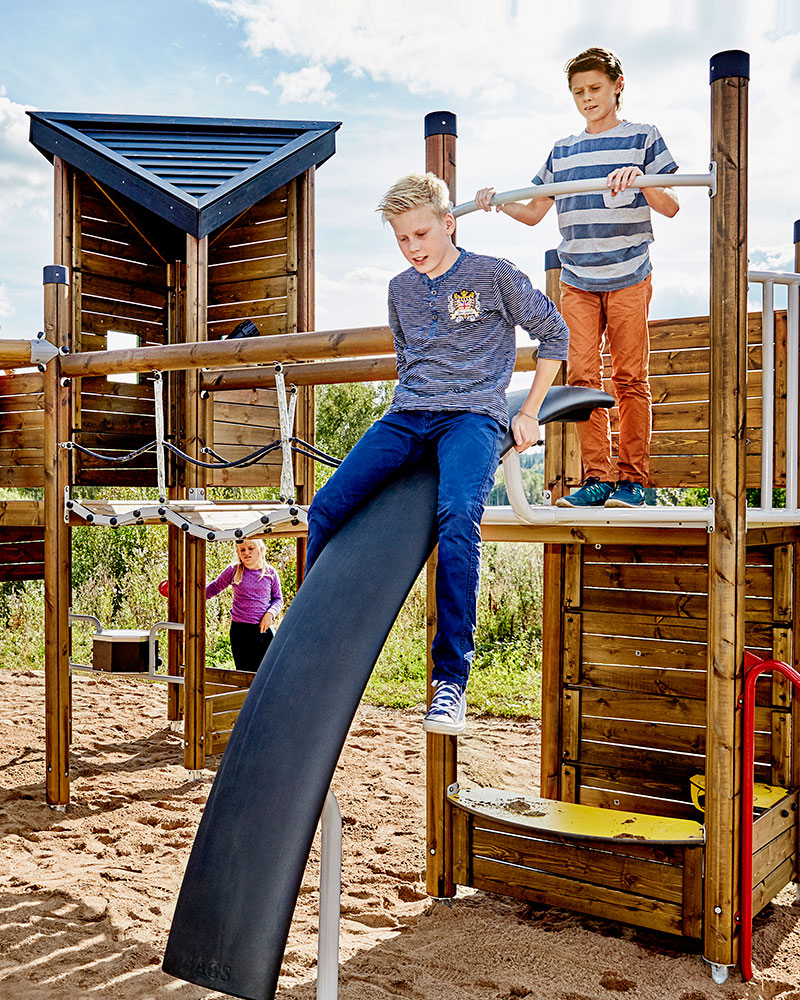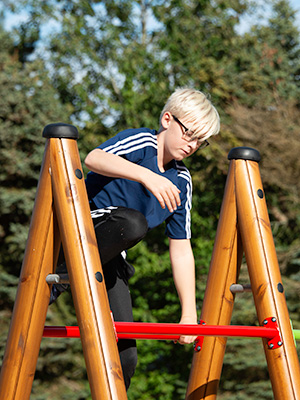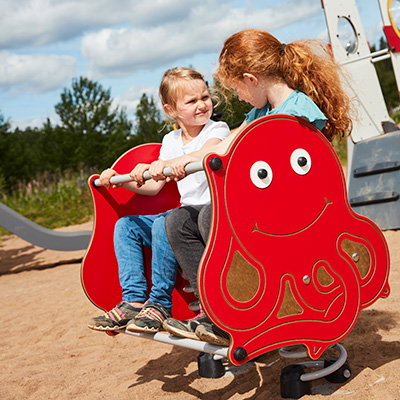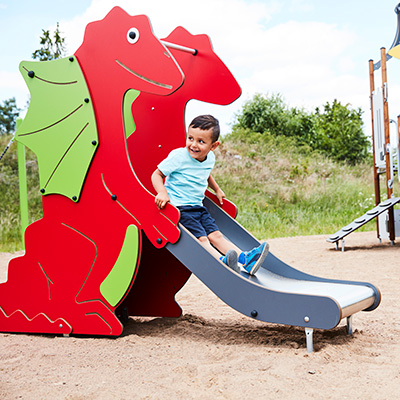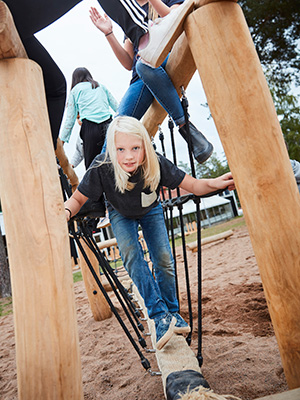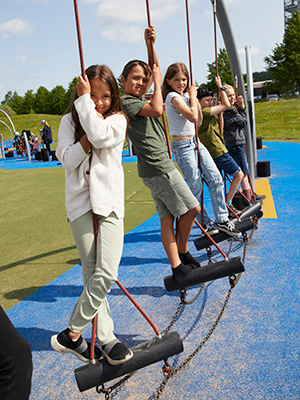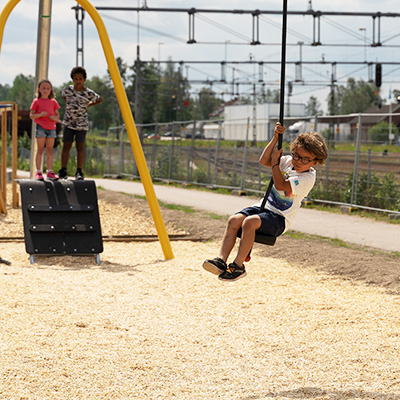Guide to designing inclusive playgrounds
This inclusive playground design guide has been created in collaboration with playground and child development experts as a resource to help create great outdoor play environments for children of all ages and abilities.
Inspiring all to play together
Our mission is to create inclusive play spaces where everyone can play together. These playgrounds should be accessible and engaging for children of all ages and abilities, encouraging interaction and socialization.
Playing is crucial for children's activity, learning, friendship-building, and overall development and wellbeing. Inclusive play spaces foster positive connections, relieve stress, stimulate creativity, boost confidence, and allow children to experience the joy and benefits of play.
Five principles for designing an inclusive playground
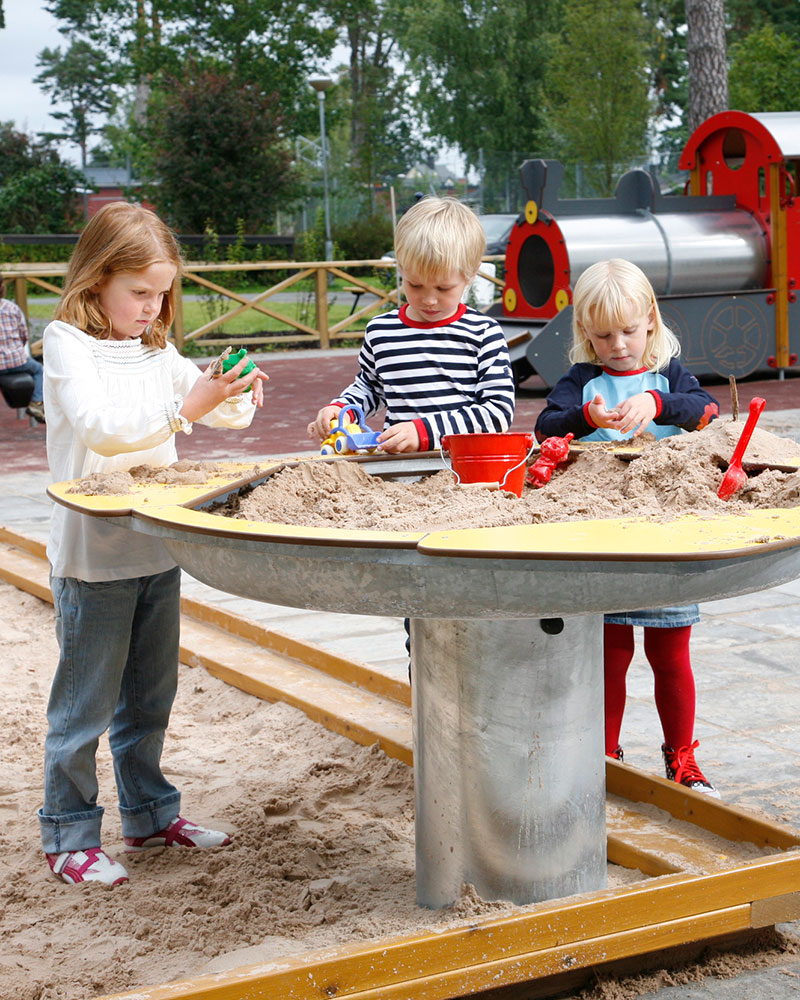
1. Multi-sensory elements
Include equipment that stimulates each sensory system. For auditory processing, use musical instruments and talking tubes. Proprioceptive activities like climbing products, nets, and jumping devices support muscle and joint movement. Tactile engagement is achieved with textured climbing rocks, sand play, and play panels. Vestibular development benefits from playground spinners, swings, and balancing activities. Visual perception is enhanced with brightly colored play panels, contrasting colors, and telescopes.
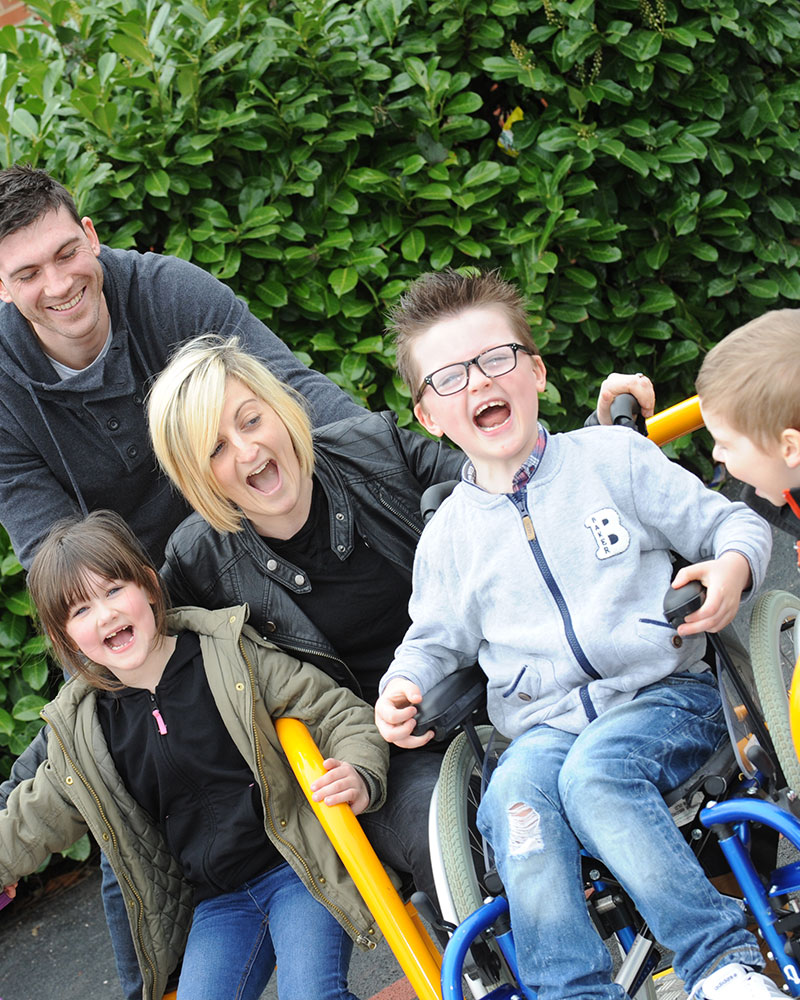
2. Accessibility
An inclusive playground must be accessible, ensuring easy travel, movement, and approach. Choose surfacing materials that meet EN 1176 and EN 1177 standards, balancing play value, injury reduction, access, and aesthetics. Routes should be wide enough for wheelchair users, parents with strollers, and children who prefer not to be touched to pass each other comfortably. Ensure flush transitions between different surfaces to allow free movement for those using mobility aids.
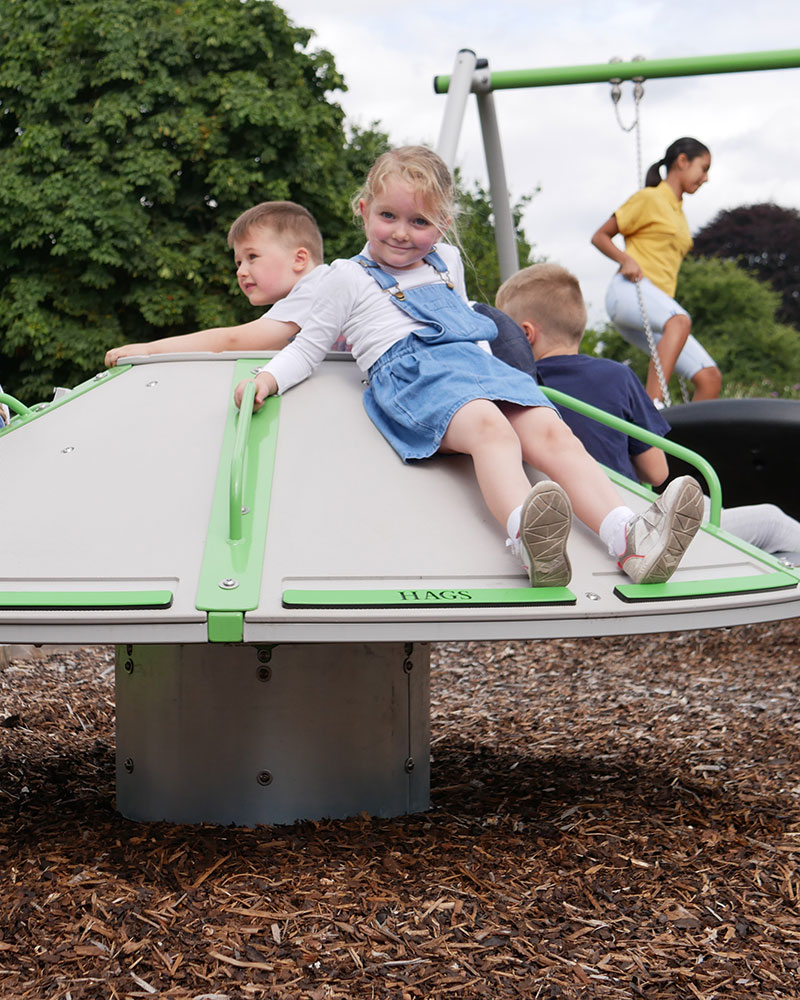
3. Play for All
Group similar items with varying levels of challenge, such as spinning equipment, together so children of different abilities can participate in the same activity side by side. Playgrounds should engage children of all ages and abilities by offering a range of equipment with diverse play values and challenges. While not every child will use every piece of equipment, it is essential that every child has a real choice in what they play on.
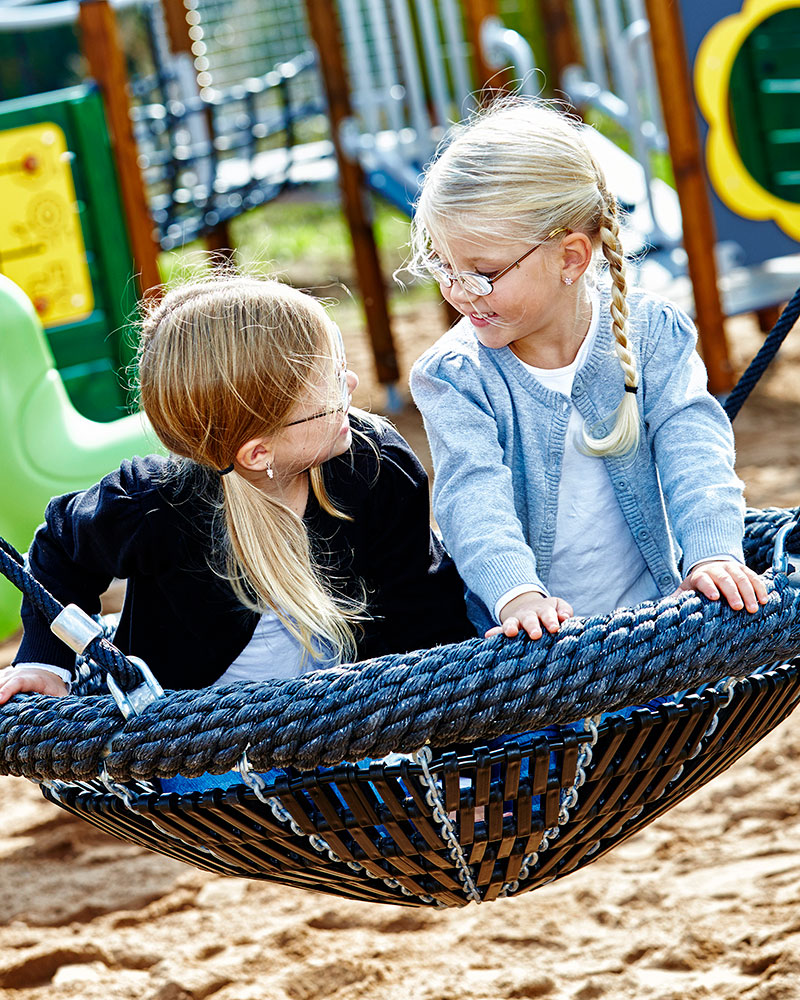
4. Opportunity for calm
Secluded areas within the playground, yet still in sight, are ideal for children needing a quiet space to retreat from sensory overload. Examples include spaces under multi-play structures, playhouses, and other enclosed equipment where children feel secure while remaining visible to parents or carers. An orientation path allows children to survey the play area before engaging, providing a safe, low-activity zone for entering and exiting play on their own terms.
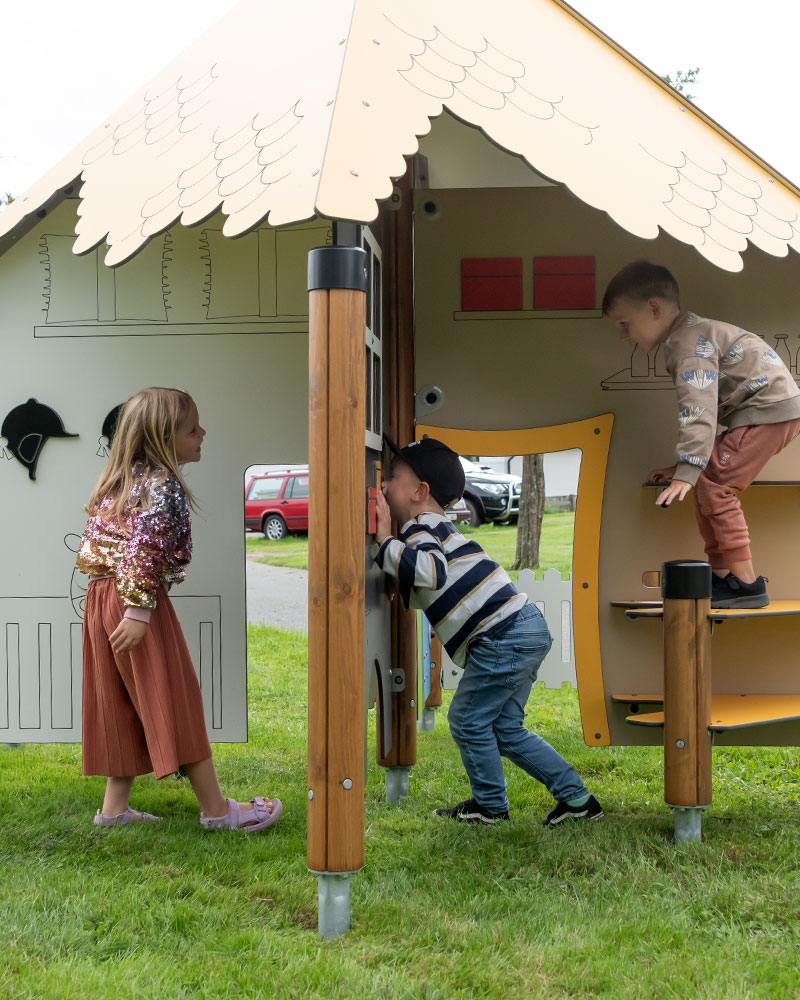
5. Social environments
Playgrounds are excellent for children to practice social skills, so it's crucial to include equipment that encourages cooperative play. Solitary play involves a child exploring alone, so provide equipment that can be used independently. Onlooker play allows children to watch and converse with others without joining in, facilitated by grouping equipment. Parallel play happens when children play side by side with separate activities, like on swings. Associate play involves children playing independently while mimicking others, conversing, and taking turns, seen in sand, water, and pretend play areas.
Designing an inclusive playground
Designing for inclusion requires thoughtful integration of play values and accessibility. The following sections highlight key elements to consider when creating an inclusive play space. This guide is flexible, allowing designers to prioritize certain aspects and develop custom strategies to best meet users' needs.
Explore the pages below to help you plan and design an inclusive playground.

